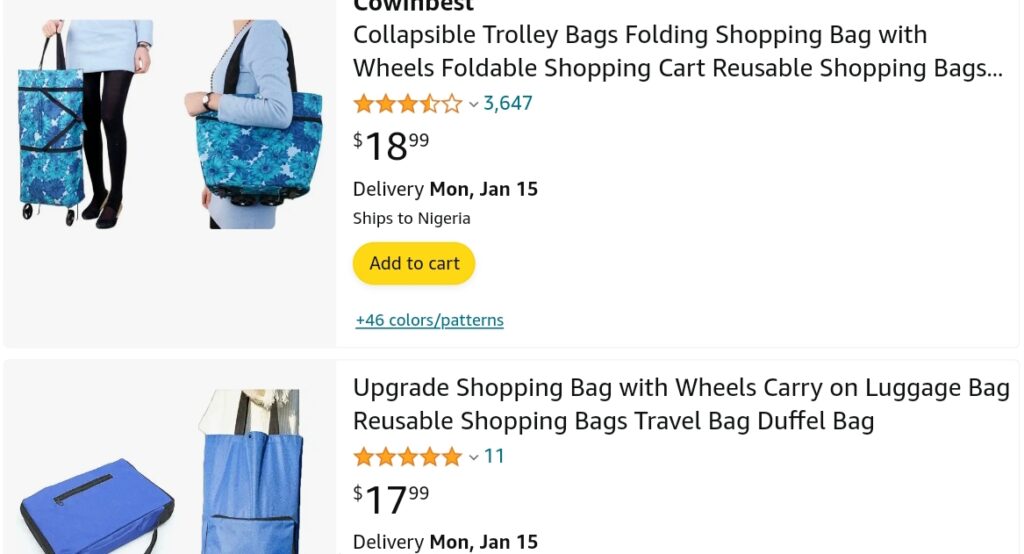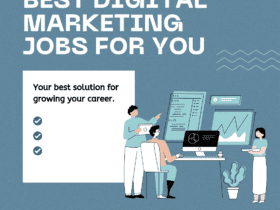Let’s explore the 4 Ps of marketing together. You may have come across this concept in conversations, textbooks, or even during your school days.
I understand that it might seem like a dull and obvious topic, but there is more to it than meets the eye. And guess what? It’s not just for big companies. In fact, if you’re a smaller business, leveraging the 4 Ps of marketing becomes even more crucial.
Here are a few key points we’ll cover in this discussion:
The 4 Ps of marketing—product, price, place, and promotion—are the four fundamental pillars of any marketing strategy.
By focusing on these pillars, you can enhance your marketing strategy and ensure that you’re covering all the necessary aspects.
Whether you’re a new business or an established one, you can apply the 4 Ps of marketing to your operations.
But before we delve deeper, let’s first break down what these Ps actually mean…
What Are The 4 Ps of Marketing?
Imagine that you have a fantastic product or service that you want to sell. You believe it’s amazing and that people would love it. But here is the thing: if you don’t have a solid marketing strategy, it’s going to be really hard to get your product or service in front of the right customers.
That’s where the 4 Ps of Marketing come in. It’s like the foundation of a strong marketing strategy. It help you make smart decisions and ensure that you’re covering all the important aspects of promoting and selling your product.
The four Ps of marketing are:
1. Product: This means what you’re selling to your customers. It can be a physical item, like a phone or a piece of clothing, or it can be a service, like haircuts or consulting. When thinking about your product, consider what makes it special or different from others. For example, if you’re selling handmade soap, you might highlight, that it’s made from natural ingredients and has a refreshing scent.
2. Price: Price is how much you charge your customers for your product or service. It’s important to set a price that makes sense for both you and your customers. If your price is too high, people may not be able to afford it. If it’s too low, you may not make enough profit. For example, if you’re selling cupcakes, you might set a price of $2 per cupcake based on the cost of ingredients and your desired profit margin.
3. Place (Distribution): Place refers to where and how customers can buy your product. It could be through a physical store, an online shop, or even at a local market. Think about where your target customers are likely to go when they want to purchase something like your product. For example, if you’re selling specialty coffee beans, you might choose to sell them online through your own website and also partner with local cafes that share a similar target audience.
4. Promotion: This is all about letting people know about your product and convinced them to buy it. There are many ways to promote your business, such as using social media, advertising, or word-of-mouth. For example, if you have an online store, you might create an Instagram account where you share tips about your business to attract potential customers. You can also offer a discount for referrals to encourage people to spread the word about your service.
The 4 Ps of marketing may sound simple, and it actually is. This concept helps businesses increase their sales, but it’s not as easy as it seems.
The 4 Ps of marketing were introduced by Professor Jerome McCarthy in 1960. He wrote a book called “Basic Marketing: A Managerial Approach” where he explained these four important aspects of marketing. This 4 ps marketing are the key things that businesses need to think about when they are creating their marketing strategies. It help companies decide what kind of product to offer, how much to charge for it, where to sell it, and how to promote it to reach customers. The 4 Ps have become widely accepted as important principles in the world of marketing.
So, how can you use the 4 Ps of marketing for your own business?
The best way to understand the 4 Ps is by looking at examples of how other brands have used them. Let’s explore these concepts and see some real-life examples of the 4 Ps of marketing in action. This will help you apply them to your own company.
The First P of Marketing: Product
let’s break down the first P of marketing, which is Product, in simpler terms:
When we talk about the Product in marketing, we’re referring to the thing that a company sells. It could be a physical item like a phone or a pair of shoes, or it could be a service like consulting or hairstyling.
Let’s say that you’re selling smartphones, and we’ll use that as an example to explain the different aspects of the Product in marketing:
A. Features and Benefits: When you’re selling smartphones, you want to highlight the great things about them. For instance, you could mention that the phones have an excellent camera, a large screen, and a battery that lasts a long time. These features allow users to take amazing photos, enjoy videos and games on a big display, and use the phone throughout the day without worrying about the battery running out.
B. Branding and Packaging: As a seller of smartphones, you want to make your brand and packaging appealing. You can design a stylish logo for your brand and create attractive packaging for the phones. This way, when customers see your brand or open the box, they’ll have a positive impression of the product.
C. Quality and Durability: It’s crucial to ensure that the smartphones you sell are of high quality and built to last. You want customers to trust that the phones are reliable and won’t break easily. So, you’ll use strong and durable materials and conduct quality tests to make sure the phones can withstand daily use.
D. Product Life Cycle: In the world of smartphones, new models are constantly being released. Let’s say you introduce a new smartphone model that has innovative features and generates a lot of excitement among customers. Over time, newer models will come out, and the one you’re selling will become older. As a result, its popularity of the smartphone will reduce as customers attention shifts to the latest models.
E. Product Differentiation: To make your smartphones stand out from competitors, you can offer unique features or benefits. For example, you could include a special feature like facial recognition to unlock the phone or make it water-resistant. These distinctive qualities give customers a reason to choose your smartphones over others in the market.
I hope this explanation helps you understand the different aspects of the Product in marketing when it comes to selling smartphones. Remember, these principles can be applied to various products or services in different industries.
The Second P of Marketing: Price
Let’s break down the second P of marketing, which is Price, in simpler terms:
Price is the amount of money that customers have to pay for a product or service. It’s an important part of marketing because it affects how customers perceive the product and how a company makes money.
When we talk about Price in marketing, here are some key things to remember:
A. Pricing Strategy: Companies need to decide on a pricing strategy. They can base prices on how much it costs to make the product, or they can set prices based on what customers are willing to pay. They can also consider what competitors are charging and adjust their prices accordingly.
B. Costs and Profits: Companies need to think about the costs involved in making and selling the product. They need to cover their expenses and make a profit, so they set the price accordingly.
C. Value for Customers: The price also affects how customers perceive the value of the product. Higher prices might make customers think the product is better or more exclusive, while lower prices might make them think it’s a good deal. Companies need to find the right balance between price and value to attract customers.
D. Pricing Strategies: Companies can use different pricing strategies. They can offer discounts or sales to attract customers, use pricing tricks like setting prices at $9.99 instead of $10, or bundle products together at a discounted price. These strategies can help companies stand out and attract customers.
E. Competition: Companies also need to consider what their competitors are charging for similar products. They want to stay competitive, so they may adjust their prices to match or beat the competition.
F. Customer Sensitivity to Price: This refers to how much customers care about the price of a product and how their purchasing behavior changes in response to price changes. Some customers are very sensitive to price, meaning that even a small change in price can significantly affect their decision to buy. On the other hand, some customers are less sensitive to price, so changes in price have little impact on their buying decisions.
By carefully considering the Price aspect of marketing, companies can find a price that is attractive to customers while still making a profit. They may adjust prices based on what customers are willing to pay and what their competitors are doing. The goal is to find a price that makes customers happy and keeps the business successful.
The Third P of Marketing: Place
“Place” in marketing means choosing the right location for your business.
Just like they say in real estate, location is important in marketing too.
Place in marketing is all about how a product or service gets to the customers. It’s about finding the best ways to make the product available in the right locations, so that customers can easily find and buy what they need.
This applies to both physical stores and online platforms.
When we talk about Place in marketing, there are several important things to consider. One of them is deciding how the product will reach the customers. This could mean selling it directly to customers through physical stores or online platforms. Some companies might use intermediaries like wholesalers or retailers. The goal is to choose the most effective and efficient ways to get the product into the hands of customers.
Another aspect of Place is where the product is actually sold. This could be in physical stores, shopping malls, or even temporary pop-up shops. The idea is to choose locations that are convenient and easy for customers to access. By putting the product in places where customers already go, it increases the chances of them finding and buying it.
Managing inventory is also important when it comes to Place. This means keeping track of how much of the product is available and making sure there’s enough to meet customer demand. It’s a balancing act to have the right amount of inventory so that customers can always find what they need without having too much excess that can lead to waste.
The logistics and transportation aspect of Place is about getting the product from where it’s made to where it needs to be sold. This involves things like choosing the right shipping methods, storing the products efficiently, and making sure they are delivered to the right places at the right time. It’s all about making sure the product is available when and where customers want it.
Did you know that In today’s digital world, having an online presence is crucial for Place strategies. This means having a website or an online store where customers can browse and buy the product. It also includes using online marketplaces and digital marketing to reach more customers. Having a strong online presence expands the reach of the business and makes it easier for customers to find and purchase the product.
Lastly, customer experience is a big part of Place. It’s about making sure that customers have a good experience when they interact with the product and its distribution channels. This could mean having a well-designed store or website, providing excellent customer service, and making the buying process easy and enjoyable. A positive customer experience not only encourages customers to buy, but also keeps them coming back in the future.
By considering all these aspects of Place, companies can make sure that their product is available where and when customers want it. It’s about making it easy for customers to find and buy what they need, and creating a positive experience that keeps them satisfied. Ultimately, effective Place strategies lead to more sales, happy customers, and a competitive advantage in the market.
The Fourth P of Marketing: Promotion
Promotion in marketing is all about getting the word out about a product or service in a way that grabs people’s attention and makes them excited to buy it. It’s like spreading the news and creating a buzz around what you have to offer.
When we talk about Promotion, there are a few important things to keep in mind:
A. Advertising: This is all about using different ways to show off your product or service. It could be through TV or radio commercials, ads in magazines or newspapers, or even on websites and social media. The goal is to create eye-catching messages and visuals that make people want to learn more and try what you’re offering.
B. Public Relations (PR): PR is about building a good image and reputation for your brand. It involves things like getting featured in the media, hosting events, or sponsoring activities that align with your brand values. PR helps create a positive impression and trust in your company, making people feel excited to be associated with you.
C. Sales Promotion: This is when you offer special deals or incentives to get people to buy your product or service right away. It could be discounts, coupons, free samples, contests, or loyalty programs. Sales promotion is like a little push that encourages people to take action and make a purchase.
D. Personal Selling: This is when you have direct conversations with potential customers to convince them to buy what you’re offering. It could be through face-to-face meetings, phone calls, or even online chats. Personal selling allows you to tailor your message to each person’s needs and build a relationship that makes them excited to buy from you.
E. Direct Marketing: This is about reaching out to customers directly, like sending them personalized emails, letters, or making phone calls. It’s a way to connect with people individually and make them feel special. Direct marketing is like having a personal conversation that makes people excited to learn more about your product or service.
F. Digital Marketing: This is all about using the power of the internet to promote your business. It includes things like optimizing your website to be found in search engines, creating interesting content to attract people’s attention, using social media to engage with your audience, and running online ads. Digital marketing is like using technology to reach a lot of people and make them excited about what you have to offer.
By using effective Promotion strategies, you can create a lot of excitement around your product or service. It’s about making people curious, interested, and eager to try what you’re offering. Promotion helps you stand out from the competition, build a strong brand, and create a loyal customer base who can’t wait to buy from you.
How to Use the 4 Ps of Marketing in Your Marketing Business
You can easily use the 4 Ps of marketing to improve your marketing strategy. It doesn’t matter if you’re introducing a new product or service or if it has been around for a long time. The following tips can help you make your strategy better.
How to Create the Best Product
Creating the best product means making something that people really love and find useful. To do that, you need to think about what people want and how you can make it even better.
First, you should find a problem or a need that people have. For example, let’s say you notice that many people struggle to carry heavy grocery bags up the stairs to their apartments. You think, “Hmm, maybe I can create a product that makes it easier for them.”
Next, you set goals for your product. What do you want it to achieve? Maybe your goal is to help people carry groceries more easily and reduce the strain on their arms and back.
Now, it’s important to see what other products are out there that try to solve a similar problem. Look at what they offer, how they work, and what customers like or don’t like about them. For example, you might find that there are some reusable shopping bags with wheels, but people complain that they are too bulky and hard to maneuver.

Based on what you learned, you can start thinking about what will make your own product special. How can you make it better than what is already available? In our grocery example, you might come up with the idea of a lightweight, foldable cart that can easily fit in a bag when not in use. It will be compact, sturdy, and easy to pull around.
Once you have an idea, you can create a prototype or a sample version of your product. This is where you can test it out and get feedback from people. You might ask some friends or family members to try it and tell you what they think. They might say, “Wow, this is so much easier to use compared to the bulky ones I’ve seen before!”
Based on their feedback, you can make improvements and refine your product. Maybe you realize that the handle could be more comfortable or that the wheels could be smoother. You make those changes to make your product even better.
Remember, quality is important. You need to make sure that your product is well-made and durable. You don’t want it to break easily or fall apart after a few uses. So, choose good materials and make sure everything works properly.
As you continue developing your product, keep listening to your customers. Ask them for feedback and suggestions. They might say, “I love this cart, but it would be even better if it had a small pouch to hold my phone and keys.” You can take that feedback into consideration and add that feature to your product.
Lastly, building a strong relationship with your customers is key. Provide good customer service and be responsive to their needs. If they have questions or concerns, address them promptly. This will help you build trust and loyalty with your customers.
How to Set the Right Price
Setting the right price for your product or service is important because it affects how much money you make and what customers think about the value of what you’re selling. Let’s take grocery bags as an example to understand how to set the right price.
First, you need to figure out how much it costs you to make or buy the grocery bags. Consider things like the cost of materials, labor, and any other expenses related to producing or sourcing the bags. For instance, if each bag costs you $2 to make, you need to make sure you sell them for more than $2 to cover your costs and make a profit.
Next, think about your target customers. Who will be buying your grocery bags? Are they people who value high-quality and are willing to pay more, or are they price-conscious shoppers who look for bargains? Understanding your customers’ preferences and their willingness to pay will help you determine the right price point. For example, if your bags are made from eco-friendly materials and appeal to environmentally-conscious shoppers, you might be able to charge a higher price because they see the value in supporting sustainable products.
It’s also important to consider what other grocery bags are available in the market and at what prices. Take a look at your competitors and see what they are charging for similar bags. This will give you an idea of the price range that customers are accustomed to. For instance, if other grocery bags in the market are priced between $17 and $18, you might want to set your price within that range to stay competitive.

Another factor to think about is what makes your grocery bags special or unique. Do they have additional features, like extra durability or convenient compartments? If your bags offer something extra that customers find valuable, you can justify setting a higher price. For example, if your bags are designed to be extra sturdy and can carry heavy loads without tearing, customers may be willing to pay a little more for the added durability.
Lastly, remember that pricing is not set in stone. It’s important to be flexible and willing to adjust your prices based on different factors. Keep an eye on the market, listen to customer feedback, and be open to making changes if necessary. For example, you may find that customers are hesitant to buy your grocery bags at a certain price point, so you might consider offering a limited-time discount or running a promotional offer to encourage sales.
Setting the right price for your product, like we did with grocery bags, involves considering your costs, understanding your target customers, researching the competition, highlighting unique features, and being adaptable. By carefully evaluating these factors and making informed pricing decisions, you can find the right balance that attracts customers, generates profit, and supports the success of your business.
How to Find the Right Place
Finding the right place for your business is all about selecting the best location where you can reach your target customers and thrive. It’s like finding the perfect spot for your business to bloom. Let me walk you through some important steps to help you find the right place.
First, think about who your customers are and where they are located. Are they people who live in urban areas or suburban neighborhoods? Understanding their location will help you determine where to set up your business. For example, if your target customers are eco-conscious urban dwellers who frequently visit farmer’s markets, it could be beneficial to locate your grocery bag shop near those marketplaces.
Consider the foot traffic or customer flow in different areas. You want to be where there are a lot of potential customers passing by. For instance, setting up your grocery bag shop in a shopping mall or near a busy supermarket could attract a large number of customers who are already shopping for groceries and may be interested in purchasing your bags as well.
Research the competition in the area you’re considering. Are there other stores or businesses selling similar grocery bags nearby? Assessing the competition will give you an idea of the demand and saturation in the market. For example, if there are already several stores selling grocery bags in a specific area, it might indicate that there is a strong demand for them, making that location more favorable.
Evaluate the accessibility of the location. Think about parking availability, public transportation options, and how easy it is for customers to reach your store. If it’s convenient for people to access your store, it can increase the likelihood of them coming in and making a purchase. For example, if you choose a location near a busy bus stop or with ample parking space, it will be more convenient for customers to visit your store.
Consider the costs associated with the location. Different areas have different rental or lease prices, and it’s important to find a balance between affordability and potential revenue. For instance, if you find a location in a high-rent area, you need to ensure that the potential sales from your grocery bags can cover the expenses.
Lastly, trust your feelings and imagine how your grocery bag store would fit in that place. Picture your customers walking by or coming into your store. Does it feel like a place where they would want to buy grocery bags? Sometimes, your gut feeling about a location can help you make the right choice.
How to Create the Most Effective Promotion
Creating the most effective promotion means finding the best way to let people know about your business and convince them to buy your products or services. It’s about spreading the word and showing everyone why your business is great. Let me explain how you can use online advertising, email marketing, and Facebook ads to promote your business.
First, think about your goal. What do you want to achieve with your promotion? Let’s say your goal is to sell more grocery bags. One way you can do this is by using online advertising. You can create eye-catching banner ads or text ads that appear on websites or search engines when people are looking for the related products. For example, when someone searches for “reusable grocery bags” on Google, your ad can appear at the top of the search results, catching their attention and leading them to your website.
Next, Email marketing is another way to promote your business. It involves sending targeted emails to people who are interested in your business or have subscribed to your email list. You can share updates, special offers, or discounts through these emails. It’s important to create interesting and personalized emails that connect with your audience.
Lastly, Facebook ads are ads that appear on Facebook. You can create targeted ads that show up on users Facebook feeds or in the sidebar. You can choose who sees your ads based on things like their age, interests, and location. Facebook ads can be images, videos, or slideshows that showcase your products or services and encourage people to take action, like visiting your website or making a purchase.
To make your promotion effective, it’s important to have a clear and consistent message. Your promotion should show the benefits and unique things about your business. Use attractive pictures, persuasive words, and clear instructions to motivate people to engage with your business.
It’s also important to keep track of how your promotion is doing. Pay attention to things like how many people visit your website or how many people open your emails. This information will help you see what is working and what you can improve. By paying attention to these details, you can make better decisions and improve your promotion strategies over time.
By using online advertising, email marketing, and Facebook ads, you can reach more people, engage with potential customers, and increase your sales. Remember to set clear goals, create interesting content, and look at the results to make your promotion even better.








Leave a Review